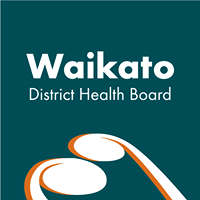Waikato Shallow Lakes Cyanobacterial Warning Update
Warning Lifted At Hakanoa
The cyanobacterial
health warning has been lifted for Hakanoa following
the
latest monitoring results from the six Waikato shallow lakes
which
are tested. Hakanoa's cell count has now been
below the health
warning level for two consecutive
months. Warnings remain in place at
all five of the
other lakes which are tested regularly.
Lake Kainui's
cell count was low earlier In the summer but has
as
expected, shown a steady rise in cell numbers over the
warmer weather.
Its warning remains in place.
The
monitoring of cyanobacteria has moved back to its summer
monthly
schedule, when there is more recreational
activity on our lakes.
Testing is done less frequently
in the winter months.
"Waikato shallow lake users should
always avoid contact with water
which looks cloudy green
or brown, or has scum forming even when there
is no
warning in place," said Waikato District Health Board
medical
officer of health Dell Hood. The current warm
weather means that algae
are likely to be present in high
numbers.
"Most lakes are not tested, and summertime
conditions generally
increase the growth of algae. Users
must consider the possibility of
cyanobacterial blooms in
any water body before they use it - at any time
of
year."
Dr Hood reminds the public that test results should
be used for general
guidance only, as cyanobacteria and
their toxins will not be evenly
spread through any lake
and may be concentrated in some areas by wind
and water
movements.
"During blooms, lakes should not be used for
any activity which
involves skin contact with the water,"
she said.
"If people choose to do this, they should shower
and change their
clothing as soon as possible afterwards,
even if no symptoms are
noticeable."
Swallowing water from lakes affected by blooms should also be avoided.
While not everyone will be affected, for some,
the risks include rash,
skin and eye irritation, allergy
symptoms such as hayfever and asthma
and possibly stomach
upsets such as diarrhoea and vomiting.
These effects may
not appear until some time after contact with
the
affected water.
The Waikato DHB Population Health
Service would like to be informed
about health problems
which develop after exposure to any of the Waikato
lakes.
Informal feedback suggests that water users may at times
experience
transient rashes and stomach upsets.
These
incidents, while not serious for the individual could be
early
warnings of more significant problems. There could
also be irritants
other than cyanobacteria present in the
water.
The PHS wishes to hear from anyone who has
experienced this sort of
problem after contact with any
of our lakes or rivers, to allow
recording of location,
time, the activity taking place and length of
time the
problem lasted.
"Minor health problems such as these do
not require medical care, so
we rely on the public to
keep us up-to-date with this information,"
said Dr
Hood.
Up-to-date information on cyanobacterial cell counts
is available from
local councils and Environment Waikato.
The Environment
Waikato
website:
http://www.ew.govt.nz/Environmental-information/Rivers-lakes-and-wetlands/healthyrivers/Waikato-River/Algal-Blooms-in-the-Waikato-region/#Heading4
has up to date results.
Health advice is available from the
Population Health Service (07) 839
8899 in and out of
hours.
ENDS



 NZ Principals Federation: Principals Describe Budget As Bitter Sweet
NZ Principals Federation: Principals Describe Budget As Bitter Sweet GfK Radio: Radio Listening Tops 3.5M Weekly Listeners
GfK Radio: Radio Listening Tops 3.5M Weekly Listeners  Jacob Douglas Motorsport: Douglas Heads To The Oval After Breakthrough Victory
Jacob Douglas Motorsport: Douglas Heads To The Oval After Breakthrough Victory Research For Maori Health and Development: Bridging The Gap In HIV Prevention For Māori - Insights And Resources Now Available
Research For Maori Health and Development: Bridging The Gap In HIV Prevention For Māori - Insights And Resources Now Available Tertiary Education Union: Weltec And Whitireia Cuts A Shocking Blow For Their Communities
Tertiary Education Union: Weltec And Whitireia Cuts A Shocking Blow For Their Communities PHARMAC: Pharmac Proposes To Fully Fund Nutrition Replacements For Some People With Crohn’s Disease
PHARMAC: Pharmac Proposes To Fully Fund Nutrition Replacements For Some People With Crohn’s Disease